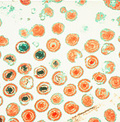 The varicella zoster virus (VZV) – which causes chickenpox and shingles – has been preventable since the mid-1990s thanks to the widespread introduction of a vaccine in developed countries.
The varicella zoster virus (VZV) – which causes chickenpox and shingles – has been preventable since the mid-1990s thanks to the widespread introduction of a vaccine in developed countries.
In the first six years since its adoption, the one-dose vaccination schedule reduced deaths by 66% overall and by 74% in previously healthy people younger than 50 years.
Since the publication of those impressive figures, vaccination coverage has increased substantially.
Now, new evidence published by US authorities in Pediatrics – the official journal of the American Academy of Pediatrics – reveals that the decline in varicella mortality rate is now 88% overall and 96% among people below 50.
The report is based on statistics from the US National Center for Health Statistics and compares mortality rates from the period 2002-2007 with trends prior to the introduction of the vaccine.
Across all age groups, the death rate from varicella-related illnesses fell from 0.41 per million population in the early 1990s to 0.05 million population in 2007.
In the last six years analyzed (2002-2008), a total of three deaths per age range were reported among children aged one to four and five to nine years. In the pre-vaccine era, annual death rates averaged at 13 and 16 deaths, respectively.
The authors – Mona Marin, John X. Zhang and Jane F. Seward from the CDC – said the current two-dose vaccination schedule has the potential to end deaths from varicella altogether.
“The impressive decline in varicella deaths can be directly attributed to successful implementation of the one-dose vaccination program. With the current two-dose program, there is potential that these most severe outcomes of a vaccine-preventable disease could be eliminated,” the authors conclude.





VaccinesToday (@VaccinesToday)
August 5th, 2011
Chickenpox deaths in children: ‘a thing of the past’? http://t.co/P0wGs1u
VaccinesToday (@VaccinesToday) (@VaccinesToday) (@VaccinesToday) (@VaccinesToday)
February 20th, 2012
#Chickenpox deaths in #children: ‘a thing of the past’? http://t.co/rRiZEhrn #varicella #vaccines #parenting #infants #kids
Christopher Ward (@chriscward)
February 21st, 2012
88% decline in chickenpox deaths since introduction of #vaccine #globalhealth @vaccinestoday http://t.co/ogQTMwmQ via @vaccinestoday
Patient Matters (@PatientMatters)
February 21st, 2012
“@chriscward: 88% decline in chickenpox deaths since introduction of #vaccine #globalhealth @vaccinestoday http://t.co/kSUGufG2
India HealthProgress (@Ihealthprogress)
February 21st, 2012
“@chriscward: 88% decline in chickenpox deaths since introduction of #vaccine #globalhealth http://t.co/pMka8ZDM via @vaccinestoday”